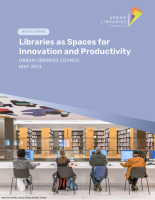How Library Visits Create Daytime Foot Traffic and Promote Economic Vitality in Downtowns: A Case Study
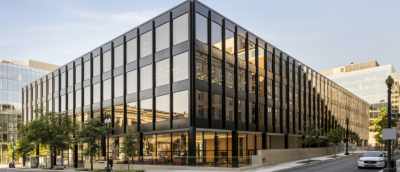
Case Study: Martin Luther King Jr. Memorial Library, Washington, DC
Download this Case Study as a PDF
How Library Visits Create Daytime Foot Traffic and Promote Economic Vitality in Downtowns
Published April 2024
Introduction
In the four years since the COVID-19 pandemic began, downtowns are still on a trajectory of recovery. For many cities, the biggest gaps between pre- and post-pandemic numbers are among weekday office workers. Employers are maintaining hybrid or remote-capable work models, and less office space is being used daily. Fewer weekday office workers are not generating as much foot traffic and the resulting economic activity that contributes to a thriving daytime population in downtown areas.
With weekly office occupancy still hovering around 50% across major metropolitan regions in the U.S., urban areas (especially downtowns with high concentrations of office use) must look to alternate attractions to sustain vitality, foot traffic and economic activity during weekdays.
In Spring 2023, the Urban Libraries Council published a report — Libraries as Spaces for Innovation and Productivity — that explores the importance of congregation in a post-pandemic world. It looked at the role of libraries as reliable structures, attractions and prime choices for visits even as we experience a great upheaval of spaces in which people prioritize spending time. Libraries with a downtown location historically contribute a significant amount of steady foot traffic and daytime population and serve as trip attractions based on the number of daily, weekly and monthly users tracked by libraries.
To support the primary recommendation from that report — the promotion of libraries as hubs for congregation, trip attractors and investors of post-pandemic economic activity — ULC sought out additional data to advance this thesis.
White Paper: Libraries as Spaces for Innovation and Productivity
Libraries have the unique opportunity to meet the growing demand for flexible workspaces and quality interactions in the third-place. Libraries as Spaces for Innovation and Productivity explores the importance of libraries as places of congregation in a post-pandemic world and offers recommendations of ways the value of libraries as spaces for innovation and productivity can be emphasized. Published May 2023.
About the Research
In early 2024, ULC initiated a partnership with Placer.ai, a location analytics technology company, to help libraries implement stronger impact evaluation practices around foot traffic data. Using the Placer.ai advanced location analytics platform, which describes physical locations, the people and businesses that interact with them and the markets they inhabit, ULC is examining how libraries are influencing visits to downtown areas and are an economic driver for cities.
We are starting this research in ULC’s backyard: Washington, DC.
The central location of the DC Public Library (DCPL) is just a 10-minute walk from the ULC offices. The Martin Luther King, Jr. Memorial Library sits within the Downtown DC Business Improvement Districts (BID), which also borders the Golden Triangle BID in DC. District leaders use these two BIDs to set the boundaries of downtown in their recent economic development action plan. While the West End DCPL branch sits just at the western edge of the downtown area, we are specifically looking at the central library location for this analysis.

About the Martin Luther King Jr. Memorial Library
The District of Columbia Public Library was created by an act of Congress in 1896 “to furnish books and other printed matter and information service convenient to the homes and offices of all residents of the District.” In 1972, a new central library, designed by Mies van der Rohe, opened down the street from its original Andrew Carnegie-funded location. It was designated a historic landmark in 2007 and underwent a modernization effort from 2017 to 2020. The $211 million update positions the central library as a center of activity for the downtown area.
Case Study
Like most major cities in the U.S., Washington DC’s downtown is seeing reduced economic activity since the pandemic. This is owed to a handful of factors in the region, including a level of remote work more than twice the national average, according to the DC Policy Center.
Despite these trends, the Martin Luther King, Jr. Memorial Library (MLK Library) is attracting people to the downtown area.
Using Placer.ai data, ULC analyzed the trip attraction performance of visitors to the MLK Library in 2023 and then to other locations downtown. According to Placer.ai’s location analytics, the MLK Library attracted over 650,000 visits in 2023 and had over 350,000 unique visitors. On average, the library had 1,850 daily trips and the average visitor spent nearly two hours there.
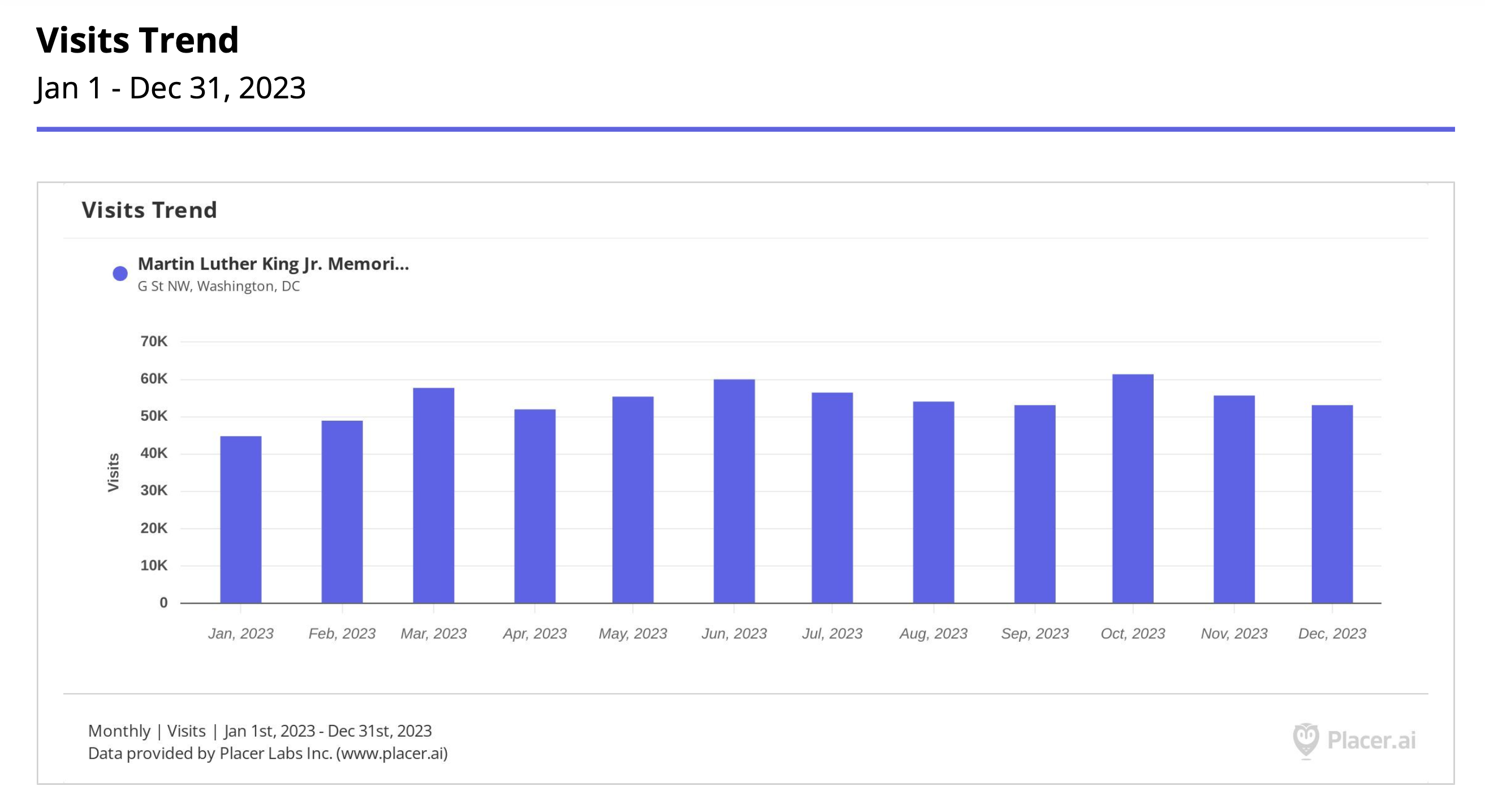
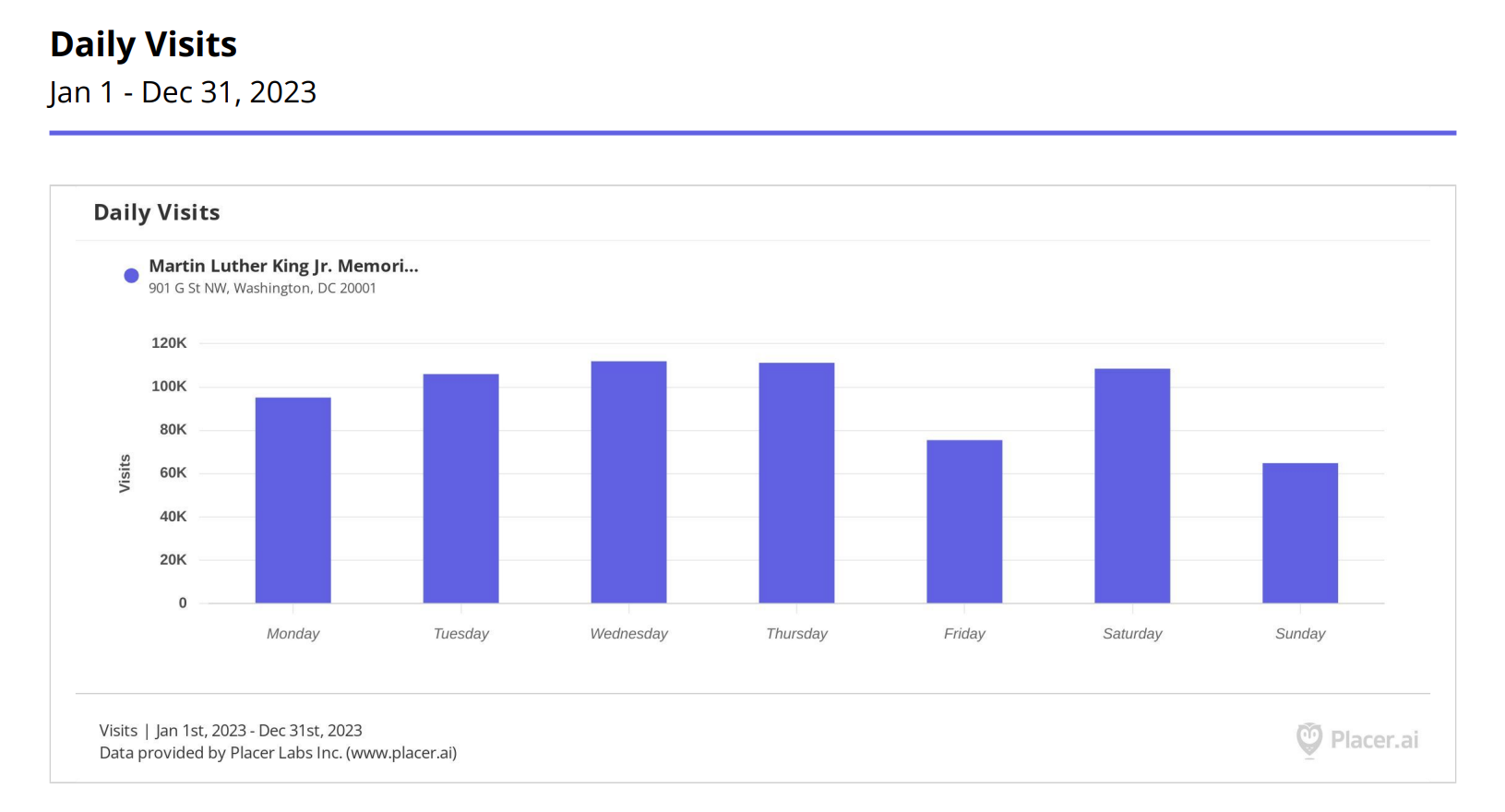
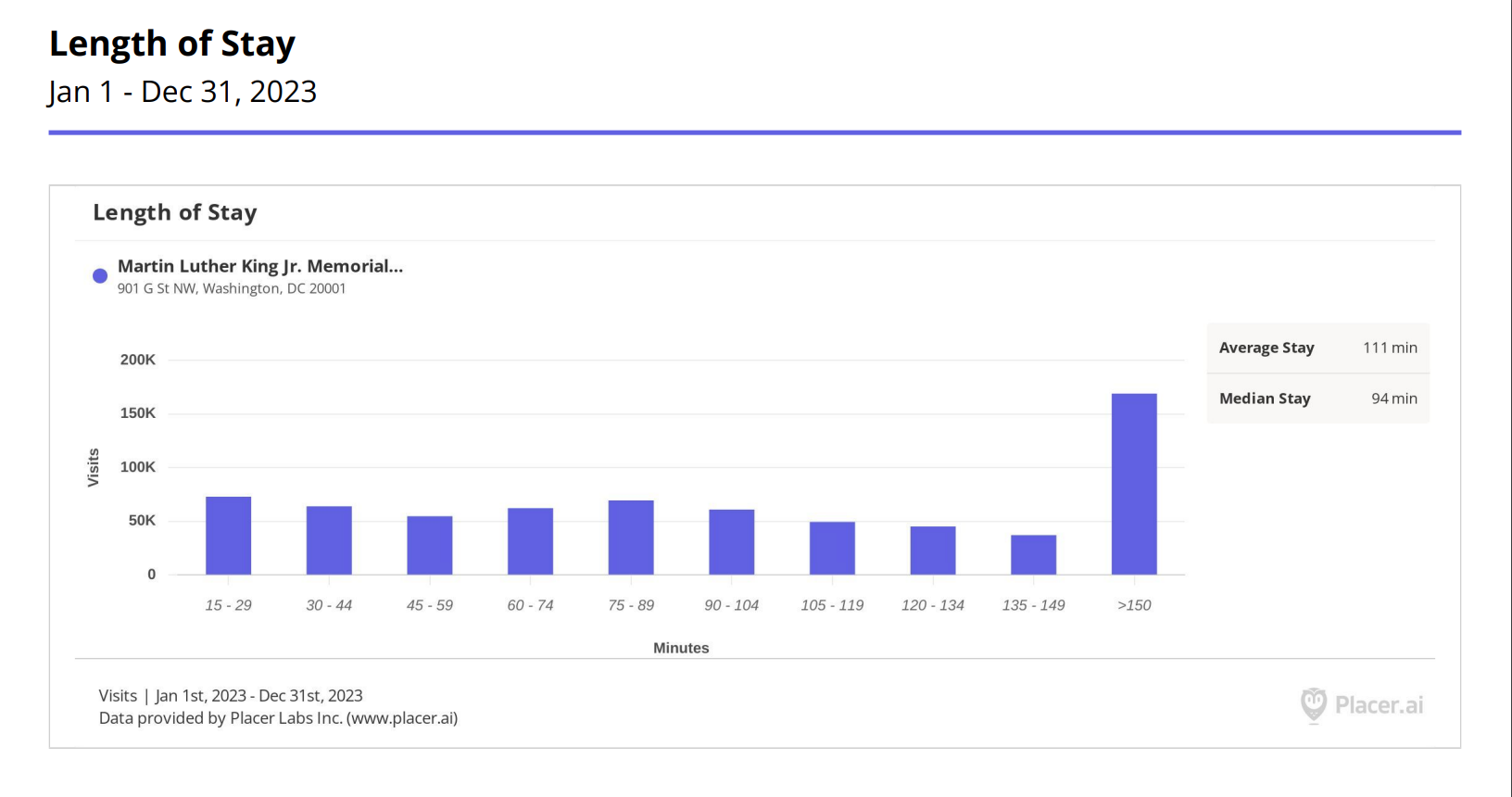
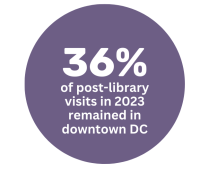
While a large percentage of visits to the MLK Library in 2023 were by individuals coming from a home or residence to the library and eventually back there, many visitors went to another downtown location or elsewhere in the DC area after visiting the library. Placer.ai estimated that of the 195,000 post-library trips to somewhere other than home, 36% (74,900 trips) of visitors stayed in downtown DC.
Defined types of post-library visits by the Placer.ai platform include Stadiums/Arena/Athletic Fields such as the nearby Capital One Arena; Hotels & Casinos such as the numerous lodging options in the area; or one of the nearly 150 restaurants downtown.
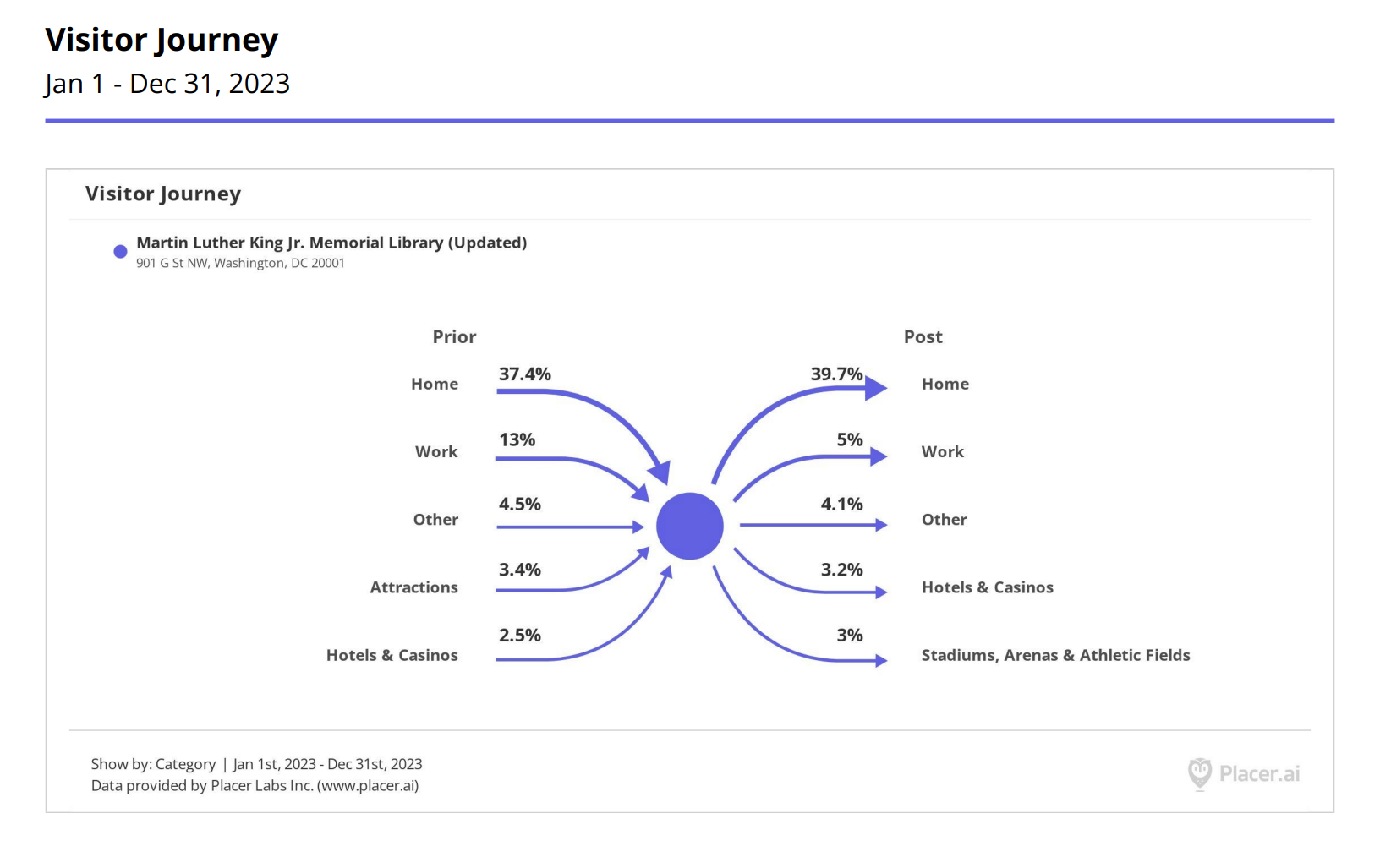
Overall, DCPL saw robust attendance across its impactful programming schedule throughout 2023, continuing its commitment to serving the District. From story times to author talks, book clubs, computer courses, events and community meetings, the library system reported it had more than 3 million visits across its 26 locations last year.
Event study: Art All Night
One of the events with the highest trip attraction numbers to the MLK Library in a single day in 2023 was Art All Night. This city-wide celebration of arts, culture, food and nightlife had special activations in all eight wards of the city. The MLK Library hosted a block party on September 30 that featured live Go-Go music acts, culinary experiences, film screenings and much more. According to Placer.ai analytics, the 2023 Art All Night block party attracted over 6,500 visitors from across DC, Maryland and Virginia.
Conclusion
While venues such as sport arenas, park spaces and cultural facilities are often top of mind when it comes to popular city trip attractions, the library should be viewed no differently. As ULC’s emerging research indicates, when a central library like Washington DC’s MLK Library invests in its purpose to be a place of gathering, convention and congregation, it can play a significant role in downtown activation plans. This case study offers just one example of the potential for libraries to serve as major factors in attracting steady population and foot traffic in urban cores and downtowns.
Beyond programming to attract visitors, libraries are proven hubs of entrepreneurship. Libraries serve as incubators that provide new businesses with resources, training and the support needed for growth and success. The forthcoming release of a revised ULC Business Value Calculator will allow library systems to capture the economic impact associated with patrons accessing industry analysis and reporting resources, utilizing maker or coworking spaces, and taking advantage of business development workshops and one-to-one consultations with local partners.
As ULC continues this research, we will examine other public libraries in cities with downtown activation plans and utilize Placer.ai data to understand foot traffic to and from these critical public institutions. When we couple this location analysis with information provided by member libraries, such as through the Business Value Calculator, we intend to capture a stronger understanding of how libraries contribute to the economic vitality of their cities.
ULC would like to acknowledge and thank DC Public Library and Placer.ai Labs for their contributions to this case study.



